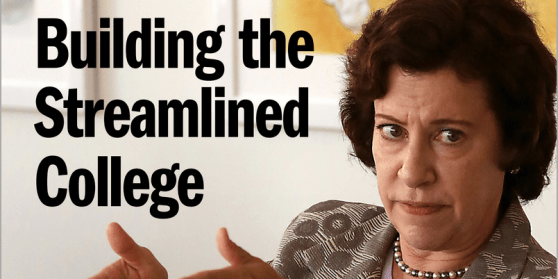This post first appeared on LinkedIn.
The phrases ‘higher education’ and ‘business model’ do not appear together on the page as often as I might hope. In fact, writing about academic programs, research, or support services, from a financial perspective can still feel heretical to those who view education solely through the lens of human experience.
The two need not be mutually exclusive, however. And moreover, if higher ed is going to not only survive, but thrive—they shouldn’t be.
It’s common knowledge that the challenges facing academia continue to mount. In response, mergers and closures are increasing. Institutions are shuttering poorly performing programs. Others find themselves at an impasse in terms of embracing innovation with shrinking budgets.
So, where does that leave academic leadership and the institutions they serve?
The Critical Role Optimization Can Play
It’s clear that ‘better sameness’ is not the path forward for higher education. Rather, leaders will have to optimize their current business model, and reallocate toward a new shared future vision for their institution. That ‘both-and’ strategy is essential. Simply optimizing may produce efficiencies and cost savings, but to what end? Declaring a clear shared future vision feels great, but without the resources to obtain it, that vision remains just a dream.
These were some of the central themes in a recent roundtable hosted by The Chronicle of Higher Education, in which I was invited to participate along with two colleagues whom I deeply respect: Walter Brooks, VP for financial affairs and CFO at Trinity Washington University and Ellen Herbst, Vice Chancellor for administration and finance at the University System of Maryland.
The discussion was moderated by journalist Scott Carlson, who prompted us to dig into the following topics:
● The ways in which college and university leaders can harvest and reinvest resources. (I shared that we’ve routinely seen institutions save 5 to 10% of their operating budgets by considering creative-yet-not-draconian approaches to streamlining expenses.)
● Insights on why institutional leaders should be playing the long game – considering what they want their colleges and universities to ultimately become five years from now.
● The group also shared how the CFO role is evolving and must continue to do so. I added that CFOs should, in fact, be a little scared these days. Change management and cultural change are a big piece of their existence now, and those two factors aren’t for the faint of heart in any industry.
● How current challenges will likely lead to a deeper exploration of higher ed’s value proposition, enabling disruptive models that reinforce institutions’ relevance and the value of a degree in a ‘red ocean’ of educational options.
Check out The Chronicle of Higher Education’s Roundtable Report: Building the Streamlined College for more on this critical conversation.
—
Achieving the sweet spot where Mission, Market, and Margin℠ intersect is possible, and it’s a destination we at rpk GROUP work with our partners to reach. Get in touch with me directly if you’d like to learn more.
Ready to discover more insights? Sign up to receive the monthly rpk Update.


